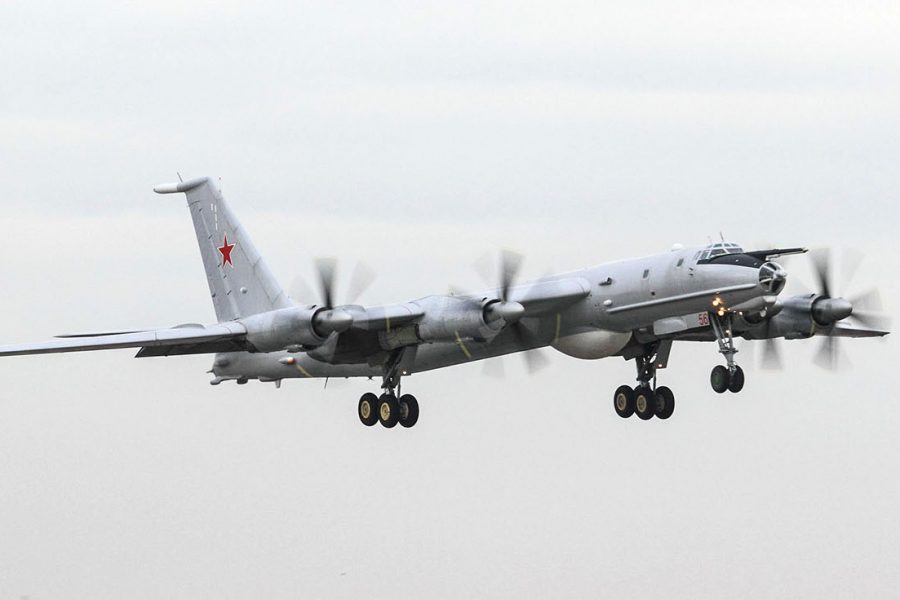U.S. Air Force F-22s and Canadian CF-18s intercepted two Russian Tu-142 maritime reconnaissance aircraft north of Alaska on March 9, North American Aerospace Defense Command announced.
The fighters, which were supported by an E-3 Sentry AWACS and a KC-135 Stratotanker, escorted the Russian aircraft for four hours as they flew in the Alaskan Air Defense Identification Zone.
Although the Tupolevs “came as close as 50 nautical miles to the Alaskan coast,” they remained in international airspace over the Beaufort Sea and did not enter U.S. or Canadian sovereign airspace, according to NORAD.
“NORAD continues to operate in the Arctic across multiple domains,” said Gen. Terrence O’Shaughnessy, commander of NORAD and U.S. Northern Command, in a March 10 release. “As we continue to conduct exercises and operations in the north, we are driven by a single unyielding priority: defending the homeland.”
Air Force Secretary Barbara Barrett highlighted the strategic importance of the Arctic region in her keynote address at AFA’s Air Warfare Symposium last month.
“As in space, America is resolute in defending and protecting international norms of access and navigation as Arctic resources and sea routes gain importance,” Barrett said, calling the Arctic a “central mission” for USAF.
O’Shaughnessy echoed those comments days later in testimony before the Senate Armed Services Committee, noting Russian heavy bombers conducted 48 air patrols in 2019, several of which were intercepted by NORAD fighters near the U.S.
“The Arctic is the new frontline of our homeland defense,” wrote O’Shaughnessy in prepared testimony. “Russia has steadily expanded its military presence in the region” and “has left us with no choice but to improve our homeland defense capability and capacity.”
